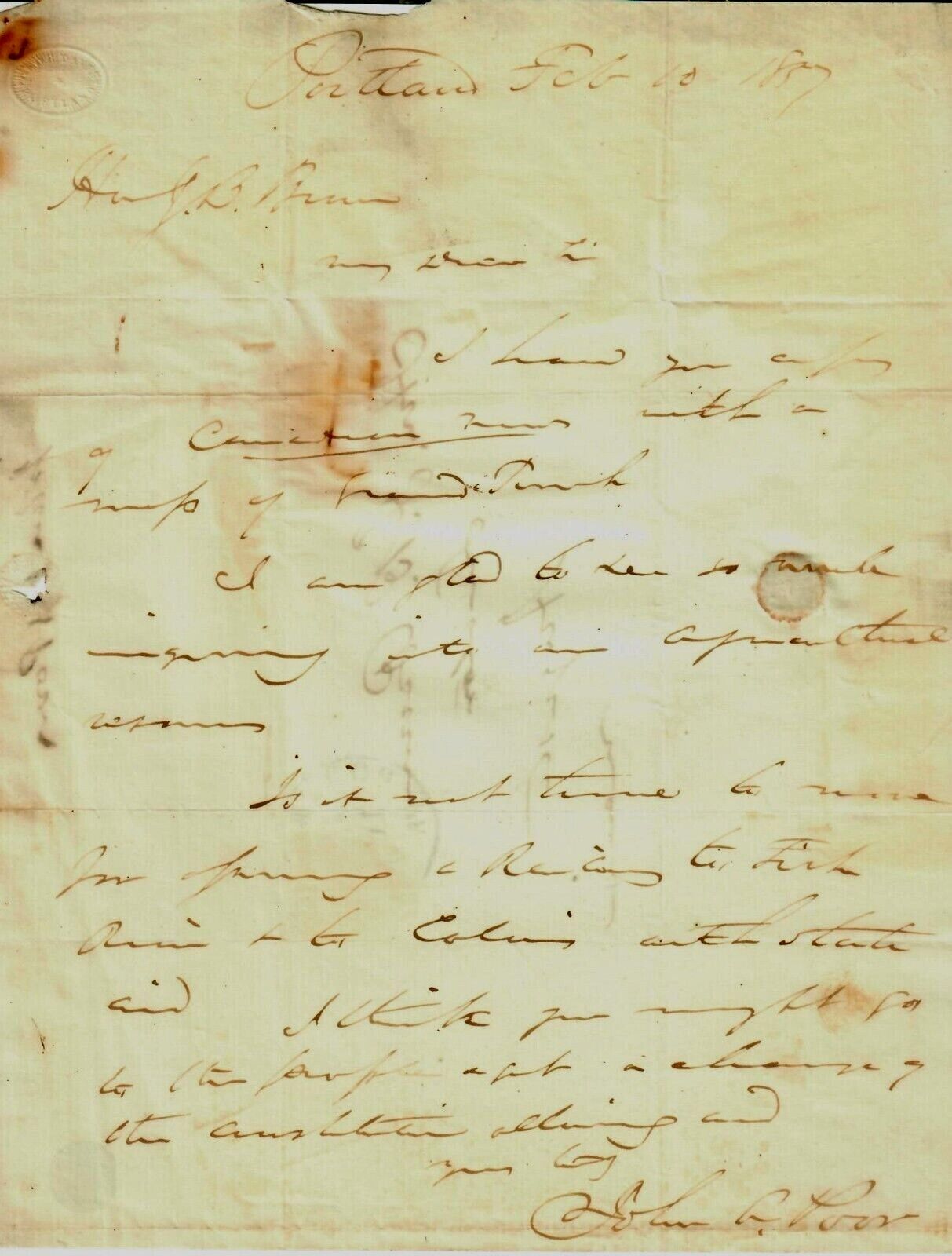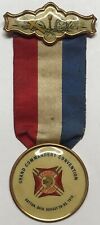RARE \"Grand Trunk Railway\" John A Poor Hand Written Letter For Sale

When you click on links to various merchants on this site and make a purchase, this can result in this site earning a commission. Affiliate programs and affiliations include, but are not limited to, the eBay Partner Network.
RARE \"Grand Trunk Railway\" John A Poor Hand Written Letter:
$139.99
Up for sale a RARE! "Grand Trunk Railway" John A Poor Hand Written Letter Dated 1857.
ES-8827
John Alfred Poor
(January 8, 1808 – September 6, 1871) was an American lawyer, editor, and
entrepreneur best remembered for his association with the Grand Trunk Railway[1] and his role in developing the railroad system in Maine.[2] He was the older brother of Henry Varnum
Poor of Standard & Poor's, who was his partner
in some business ventures. John Poor was an articulate man standing 6 feet, two
inches (1.9 m) tall and weighing over 250 pounds (110 kg). He learned the
geography and commerce of northern New England during travels as a young man;
and developed an early appreciation for the potential of railroads. His
commanding presence was enhanced by early speaking experience as a teacher and
attorney. He had a unique ability to assemble the necessary resources to build
early railroads, although he left the routine work of operations to others. John
Poor was born in Andover, Maine to Dr. Silvanus Poor and Mary
(Merrill) Poor. He became a school teacher at Bethel, Maine
before undertaking the study of law. He was admitted to the Maine Bar in 1834
and established a law practice in Bangor, Maine
with his brother Henry Varnum Poor. John Poor was inspired by his first viewing
of a steam locomotive on the Boston and Worcester Railroad in 1834. John Poor promoted the concept of a
railroad from Montreal
to Portland, Maine. Montreal would gain access to
an ice-free seaport while the Saint Lawrence River was frozen; and
Portland would gain commercial opportunities from the transfer of Canadian
exports in its harbor. Poor's vision was realized when Portland became the
winter seaport of the transcontinental Grand Trunk Railway. The Montreal Board of
Trade weighed the benefits of rail connection to Portland or Boston.
Portland was 100 miles closer to Montreal and Portland was a half day closer to
European ports; but Portland's population of 16,000 could hardly offer the
financial support for railroad construction promised by Boston businessmen. As
Boston representatives presented their case, John Poor made a legendary
300-mile (500-km) trip through the White Mountains during a
February blizzard.
Poor left Portland shortly after midnight February 5, 1845, but the wind driven
snow made it very difficult to follow the road. His sleigh
covered only 7.5 miles (12.5 km) to Falmouth,
Maine in three hours. After breakfast at Leach's Tavern, he traveled
40 miles (65 km), and had frostbite on his nose and one ear by the time he reached South Paris, Maine at nightfall. He traveled to
his home town of Andover on February 6, after obtaining help from residents of Rumford,
Maine to break a path through snowdrifts
higher than a horse's back. He then traveled another 40 miles (65 km) to
reach Colebrook, New Hampshire, at midnight.
Colebrook residents helped Poor carry his sleigh and lead the horses through Dixville
Notch where howling winds formed a 20-foot snowdrift. Poor rested in
Sherbrooke,
Quebec before venturing forth through unbroken snow 18 inches (46 cm)
deep in temperatures of -18 °F (-27 °C) and crossed the ice-covered Saint Lawrence
river at dawn on February 9. After resting 3 hours in his Montreal hotel room,
Poor addressed the Montreal Board of Trade as they considered a resolution in
support of the railway to Boston. Poor convinced the Canadians to delay support
of the railway to Boston, and subsequent debate resulted in approval of the St. Lawrence and Atlantic Railroad
to Portland. Poor had frostbitten feet and developed pneumonia
upon his return to Portland that spring. In 1846, Poor turned his attention to
building locomotives for Portland's railway. After discussions with Norris Locomotive Works Poor organized,
and became first president of, the Portland
Company on August 8, 1846. Portland Company's locomotive erecting
shops opened for business in October 1847.In 1849, John Poor purchased the American Railroad Journal, and his
brother Henry Varnum Poor became manager and editor. Standard & Poor's traces its history
back to this publication. John Poor began promoting a railway from Portland to Halifax, Nova
Scotia in 1850. He became a director of the European and North American Railway
in 1867. The railway was completed a month
after his death in 1871. He was president of the York and Cumberland Railroad
in 1851, and president of the Penobscot and Kennebec Railroad
in 1852. He died at his home in Portland, Maine, on September 6, 1871. He was
president of the Portland, Rutland, Oswego and Chicago
Railroad at the time. His ambitious vision for Portland's
rail connection with Chicago was never realized, but his European and North
American Railway became the eastern end of the transcontinental Canadian Pacific Railway.

Related Items:
RARE "Grand Trunk Railway" John A Poor Hand Written Letter
$139.99
RARE GRAND COMMANDERY CONVENTION 1915 KNIGHTS ST.JOHN RIBBON/BADGE PIN
$119.99
RARE Large 7 Branch Menorah Candlestick 100% Bronze / Religious Worship Item
$106.96



